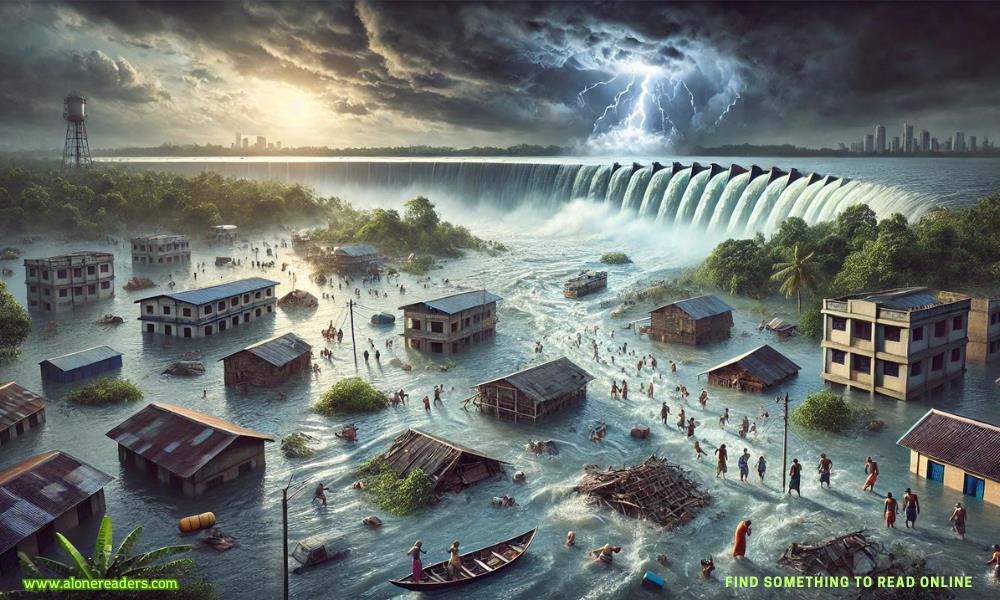
In 2024, Bangladesh experienced one of the most severe floods in its history, exacerbated by a perfect storm of natural and political disasters. Following the recent collapse of the Bangladeshi government, the country was ill-prepared to deal with the aftermath of unprecedented rainfall and a sudden, unannounced dam release by India. The resulting deluge has left millions of people homeless, without access to food, clean water, and essential services.
The flood was triggered by weeks of incessant monsoon rains that battered Bangladesh, swelling rivers and inundating low-lying areas. While Bangladesh is no stranger to seasonal flooding, the intensity and duration of the 2024 rains were far beyond normal. Meteorologists have pointed to climate change as a significant factor, with rising temperatures causing more extreme weather patterns across the region.
However, the situation took a catastrophic turn when India, which shares several rivers with Bangladesh, opened the gates of a major dam without prior notice to the Bangladeshi authorities. The sudden influx of water overwhelmed Bangladesh’s already strained river systems, leading to widespread flooding in the northern and central regions of the country.
The timing of the flood could not have been worse. Just weeks before, Bangladesh had been plunged into political chaos following the collapse of the government. The abrupt resignation of key officials and the lack of a functioning central authority left the country vulnerable, with disaster management agencies crippled by leadership vacuums and resource shortages.
In the immediate aftermath of the flood, it became clear that the interim administration was unable to mount an effective response. Emergency services were overwhelmed, and the coordination between different agencies was virtually non-existent. As floodwaters swept through villages and towns, cutting off roads and destroying homes, many residents found themselves stranded without assistance.
The human toll of the 2024 floods has been staggering. According to the latest reports, over 20 million people have been directly affected by the disaster. Entire communities have been displaced, with thousands of families forced to take refuge in overcrowded makeshift shelters. The lack of clean water and sanitation has raised fears of a major outbreak of waterborne diseases, while food shortages have become a daily reality for many.
In some of the worst-hit areas, residents have been living on rooftops and in trees, waiting for rescue teams that have been slow to arrive. The death toll, though still unconfirmed, is believed to be in the thousands, with many more injured or missing.
The economic impact of the flood is expected to be devastating. Agriculture, the backbone of Bangladesh’s economy, has been particularly hard hit, with vast swathes of farmland submerged under water. The loss of crops and livestock is likely to exacerbate food insecurity, with long-term consequences for the country’s economy.
Small businesses and local markets have also suffered, with many shops and warehouses destroyed by the floodwaters. The disruption of transport and communication networks has made it difficult for goods to reach affected areas, further compounding the economic crisis.
The international community has begun to mobilize in response to the crisis, with several countries and organizations pledging aid to Bangladesh. However, the scale of the disaster means that much more will be needed to meet the immediate needs of the affected population and to begin the long process of recovery.
India, under growing international pressure, has expressed regret over the unannounced dam release and has offered assistance to Bangladesh. Nevertheless, relations between the two countries have been strained, with many in Bangladesh criticizing India’s actions as reckless and irresponsible.
As Bangladesh begins to grapple with the aftermath of the 2024 floods, several critical lessons and challenges have emerged. The disaster has highlighted the need for better communication and coordination between neighboring countries, particularly when it comes to managing shared water resources. The lack of a timely warning from India has underscored the importance of establishing more robust protocols for transboundary water management.
Domestically, the flood has exposed significant weaknesses in Bangladesh’s disaster preparedness and response systems. The political instability that preceded the flood undoubtedly played a role in exacerbating the crisis, but the disaster has also revealed deeper structural issues that need to be addressed.
Conclusion
The 2024 floods in Bangladesh will be remembered as one of the country’s most challenging times. The combination of natural disaster and political turmoil created a perfect storm that left millions of people suffering. As the waters recede and the full extent of the damage becomes clear, Bangladesh faces the daunting task of rebuilding not just its infrastructure, but also the trust of its people in their government’s ability to protect and support them in times of crisis.
The road to recovery will be long and difficult, but it is also an opportunity for Bangladesh to strengthen its disaster management systems and to build a more resilient future. The lessons learned from this disaster will be crucial in ensuring that the country is better prepared for the challenges of an increasingly unpredictable climate.